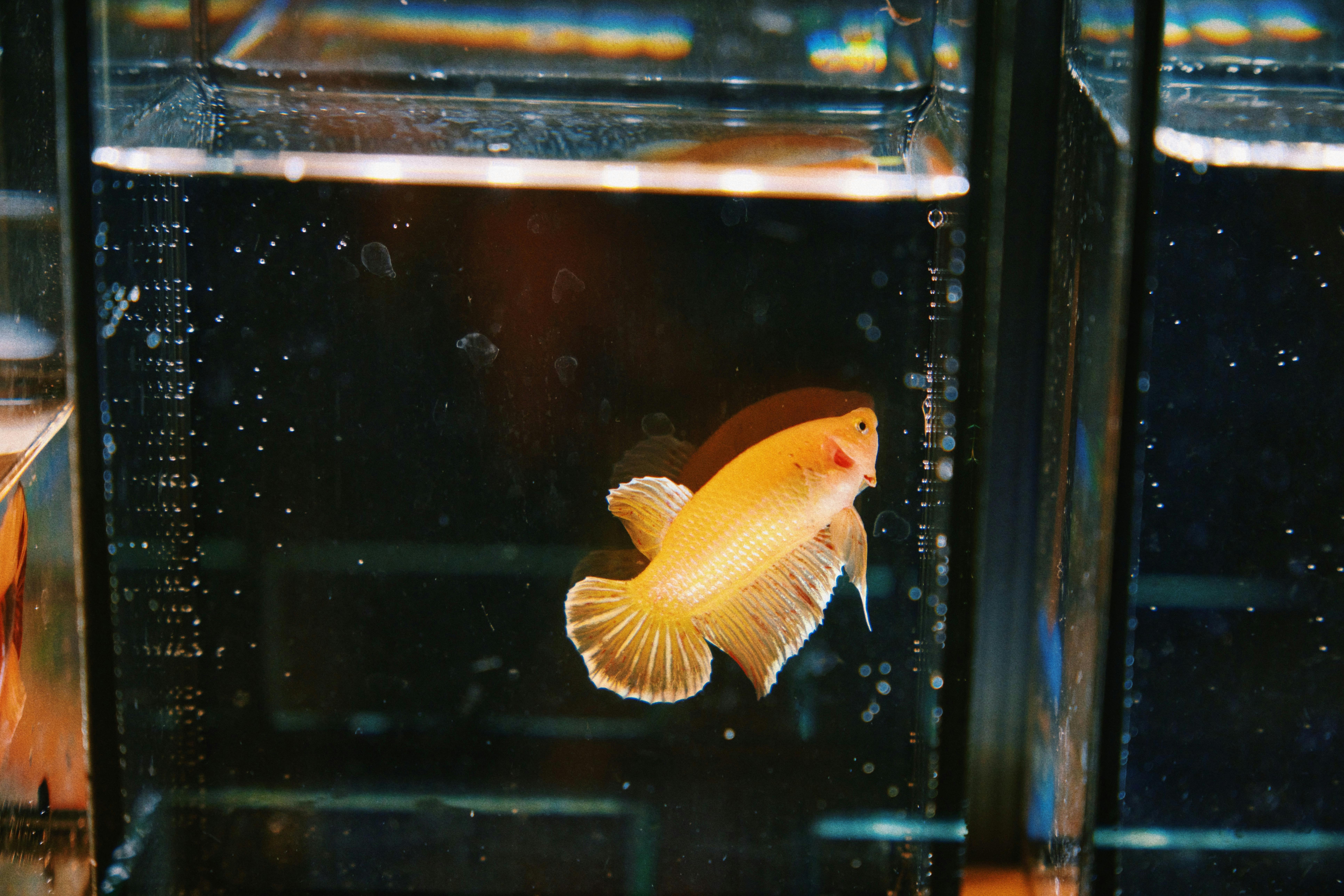Effective Ways to Care for Albino Tiger Oscar in 2025
The albino tiger oscar is an exceptional freshwater fish known for its vibrant appearance and engaging personality. As a pet owner, understanding how to care for this fish is crucial for ensuring its wellbeing and longevity. In 2025, it’s essential to stay informed about the latest practices in caring for albino tiger oscars, including their dietary needs, tank environment, and social behavior. This ensures that your fish not only thrives but also brings joy to your aquarium.
These oscars, with their stunning coloration and dramatic patterns, can grow quite large and have specific habitat requirements. This article will cover effective ways to care for albino tiger oscar fish, including choosing the right tank size, understanding their nutritional needs, and ensuring a harmonious community tank. You'll learn about their breeding behaviors, common diseases, and tips for maintaining a clean environment for your fish. By the end, you'll be equipped with the knowledge needed to provide excellent care for your albino tiger oscar.
Choosing the Right Tank Size for Albino Tiger Oscar
Building the ideal habitat for your albino tiger oscar begins with selecting the right tank size. These fish are known for their size, often reaching lengths of up to 12-14 inches, and they need ample space to swim and establish territory.
Ideal Tank Size for Adult Albino Tiger Oscar
For adult albino tiger oscars, a minimum tank size of 75 gallons is recommended. This ensures that they have sufficient swimming space and helps reduce stress levels, which can lead to healthier fish. A larger tank, such as a 100-gallon or bigger, is even better, as it allows for greater flexibility in keeping tank mates.
Setting Up Tank Conditions for Albino Tiger Oscar
Aside from tank size, the setup plays a significant role in the health of your oscar. Ensure proper filtration to maintain water quality and facilitate adequate water circulation. Oscars thrive in warm waters, so aim for a tank temperature of about 75-80°F. Additionally, use a substrate that is easy to clean and consider incorporating hiding spots using decorations or plants.
Best Plants for Albino Tiger Oscar Tank
While albino tiger oscars may be less prone to nibbling on live plants, the right selection can enhance their environment. Consider using hardy plants like Java fern or Anubias, which can withstand the playful nature of the oscar fish. These plants not only provide aesthetic appeal but also help in maintaining water quality through natural filtration.
Caring for Albino Tiger Oscar: Feeding and Nutrition
Feeding your albino tiger oscar the right diet is vital in maintaining its health. They are carnivorous and thrive on a balanced diet of high-quality pellets, live foods, and frozen options.
Healthy Diet for Albino Tiger Oscar
A well-balanced diet for your oscar includes quality pellets specifically formulated for carnivorous fish. Supplements with live or frozen foods like bloodworms, mealworms, and brine shrimp can add variety and nutrition to their meals. Keep in mind that oscars can be messy eaters, so feed them only what they can consume in about five minutes to help maintain tank cleanliness.
Feeding Frequency for Adult Albino Tiger Oscar
As your oscar matures, adjust the feeding frequency accordingly. Adult oscars typically require feeding two to three times a week, while younger fish may need daily feeding to support their growth. Keep an eye on their growth rate and health as indicators to modify their diet and feeding schedule.
Common Diseases in Albino Tiger Oscar
Despite being robust fish, albino tiger oscars can fall prey to various diseases if not properly cared for. Poor water quality can lead to issues such as Ich or fin rot. Regular monitoring of water parameters and a consistent cleaning schedule are critical in preventing these common ailments.
Socializing Albino Tiger Oscar: Tank Mates
Understanding albino tiger oscar behavior is key to maintaining a peaceful community tank. These fish can exhibit aggressive tendencies, particularly during breeding season or if they feel threatened. Selecting the right tank mates is crucial.
Ideal Tank Mates for Small Albino Tiger Oscar
When choosing tank mates, opt for fish that are similar in size and not overly aggressive. Suitable options might include larger cichlids, catfish, or plecos. Be cautious with smaller species, as oscars may perceive them as food.
Managing Aggression in Albino Tiger Oscar
Monitor interactions in your tank closely. If aggression escalates, consider rearranging the tank decorations to break established territories. This can help alleviate stress and reduce territorial disputes, facilitating a more harmonious living environment.
Breeding Albino Tiger Oscar: Setting Up for Success
Breeding albino tiger oscars requires a thorough understanding of their reproductive behavior and ideal conditions. Breeding oscars can be a rewarding experience, but it demands careful planning.
Breeding Setup for Albino Tiger Oscar
For successful breeding, a separate breeding tank is recommended. Ensure the tank is clean, with a temperature set around 80°F, and include flat surfaces for egg laying. Provide spaces that offer security for both the parents and the fry after hatching.
Distinguishing Male and Female Albino Tiger Oscars
Identifying the sex of albino tiger oscars can be challenging. Males tend to be larger and more colorful, whereas females may display a slightly rounder body, particularly when full of eggs. Understanding these differences will help you select breeding pairs effectively.
Maintaining Tank Cleanliness for Albino Tiger Oscar
Maintaining a clean environment is integral to your oscar's health. Regular tank maintenance minimizes ammonia and nitrate levels, keeping stress levels down.
Cleaning Albino Tiger Oscar Tank
Establish a routine to clean the tank, including regular water changes of 25-30% weekly. This helps in maintaining optimal water quality, which is essential for the overall wellbeing of your fish. Check your filter systems too, as these need monthly cleaning to ensure efficient operation.
Monitoring Water Quality for Albino Tiger Oscar
Utilizing water quality testing kits helps in monitoring crucial parameters such as pH, ammonia, nitrate, and nitrite levels. Ideally, pH should be between 6.5 and 7.5 for albino tiger oscars, and water hardness should range from 5 to 15 dGH. Regular testing and adjustments can prevent health issues stemming from poor water conditions.
 example.com/image2.png
example.com/image2.png
 example.com/image3.png
example.com/image3.png
Q&A Section: Common Questions About Albino Tiger Oscar Care
What type of food is best for albino tiger oscars?
A balanced diet consisting of high-quality pellets and a variety of live or frozen foods like bloodworms and pellets is ideal for albino tiger oscars. Their dietary needs are carnivorous, and ensuring they receive a nutrient-rich diet is crucial for their health and vibrancy.
Can albino tiger oscars live with smaller fish?
It's generally not advisable to house albino tiger oscars with smaller fish, as they can see them as potential prey. Opt for larger, more robust species that can hold their own in the tank to ensure a peaceful cohabitation.
How often should you clean the tank for your albino tiger oscar?
Regular tank maintenance, including performing water changes of about 25-30% weekly and checking the filtration systems monthly, is essential for the health of your oscar and the cleanliness of the tank.
What are the signs of a healthy albino tiger oscar?
A healthy albino tiger oscar will exhibit clear eyes, vibrant coloration, active swimming behavior, and a good appetite. Regular monitoring of their behavior and physical condition will help in ensuring they remain healthy.
How can I improve water quality in my oscar tank?
Improve water quality by maintaining a cleaning schedule, performing regular water changes, monitoring ammonia and nitrate levels, and utilizing effective filtration systems. These practices will contribute to a healthy living environment for your oscar.
